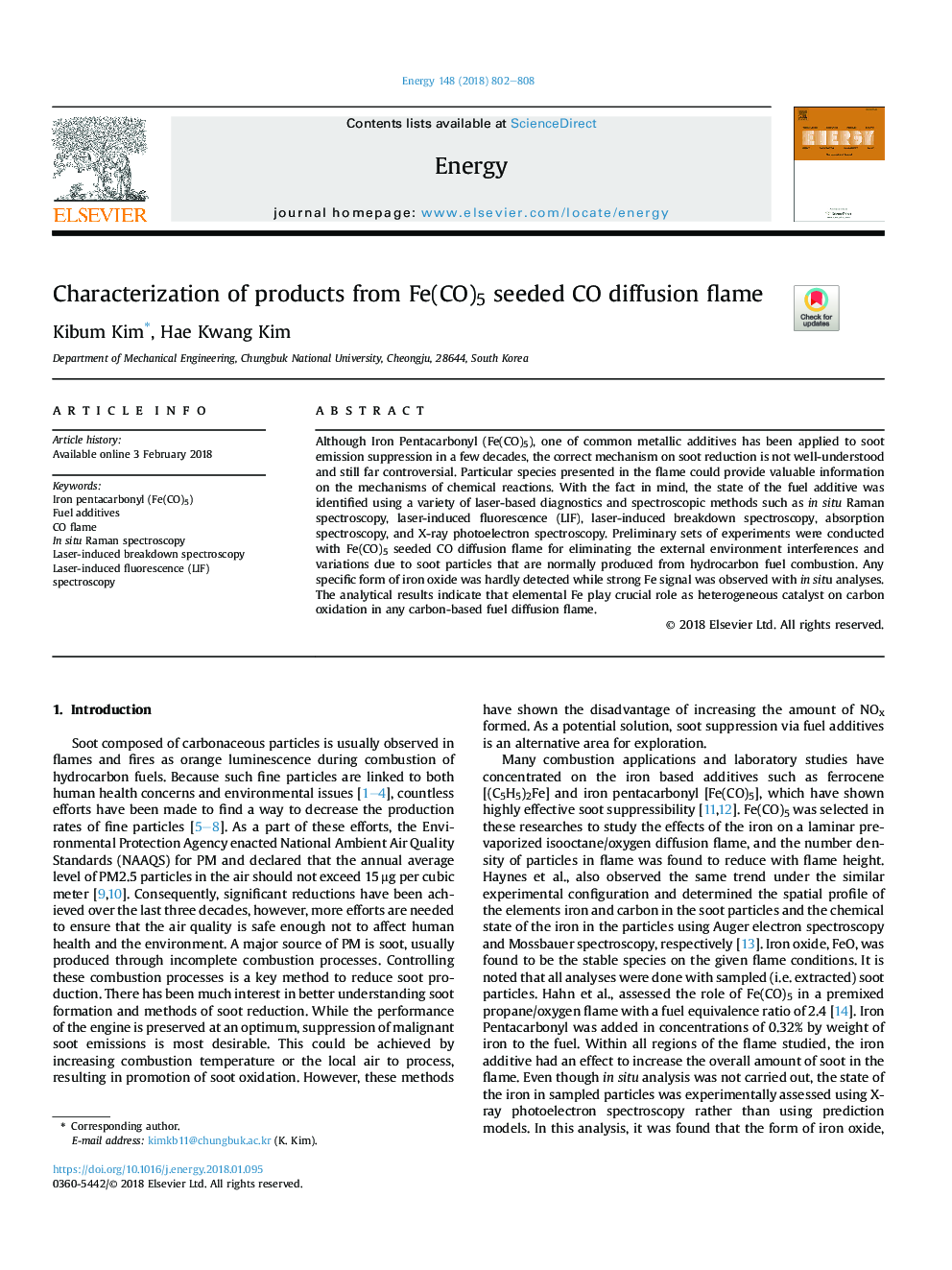| Article ID | Journal | Published Year | Pages | File Type |
|---|---|---|---|---|
| 8072054 | Energy | 2018 | 7 Pages |
Abstract
Although Iron Pentacarbonyl (Fe(CO)5), one of common metallic additives has been applied to soot emission suppression in a few decades, the correct mechanism on soot reduction is not well-understood and still far controversial. Particular species presented in the flame could provide valuable information on the mechanisms of chemical reactions. With the fact in mind, the state of the fuel additive was identified using a variety of laser-based diagnostics and spectroscopic methods such as in situ Raman spectroscopy, laser-induced fluorescence (LIF), laser-induced breakdown spectroscopy, absorption spectroscopy, and X-ray photoelectron spectroscopy. Preliminary sets of experiments were conducted with Fe(CO)5 seeded CO diffusion flame for eliminating the external environment interferences and variations due to soot particles that are normally produced from hydrocarbon fuel combustion. Any specific form of iron oxide was hardly detected while strong Fe signal was observed with in situ analyses. The analytical results indicate that elemental Fe play crucial role as heterogeneous catalyst on carbon oxidation in any carbon-based fuel diffusion flame.
Related Topics
Physical Sciences and Engineering
Energy
Energy (General)
Authors
Kibum Kim, Hae Kwang Kim,
